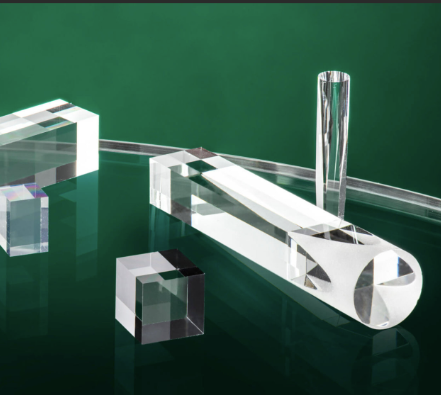3 Key Tips to Master Cylindrical Rod Lens Applications
Rod Lens Tips
7/21/20252 min read


Tip 1: Embrace the Rotation! - Perfect for Scanning
Unlike flat cylindrical lenses, a rod lens is radially symmetric (full cylinder). ✓ Key Takeaway: This makes it IDEAL for rotating applications like barcode scanners, laser printers, and rotary encoders! As it spins, it maintains a consistent focal line – flat lenses can’t do this. Think motion + line generation? Think rod lens!
Tip 2: Surface Quality is King - For Sharp Scan Lines
Since the entire curved surface is used (especially when rotating), any scratch, dig, or imperfection will distort your laser line or affect sensing accuracy. ✓ Key Takeaway: Demand higher surface quality grades (e.g., 10-5 scratch-dig or better) for critical scanning and imaging applications. Don’t compromise on finish!
Tip 3: Mounting Matters - Avoid Stress & Distortion
Clamping a solid glass cylinder too tightly can induce stress birefringence (affecting polarized light) or distort the surface shape. ✓ Key Takeaway: Use precise V-groove mounts or specialized collet mounts designed for rods. Ensure gentle, even pressure distribution and avoid overtightening. Protect the critical optical surface!
Tip 4: Material & Coating - Match Light & Environment
Rod lenses face the environment on all sides. Choose wisely!
✓ Key Takeaway:
Material: N-BK7 is common, but for UV/High Power/Durable needs, consider Fused Silica. For harsh environments, ask about hardened materials.
Coating: Broadband AR coating is often crucial (both ends and potentially the barrel if exposed) to minimize reflections across the operating spectrum, especially in scanning systems. Specify your wavelength range!
Tip 5: Understand Focal Properties - It's Different!
A rod lens acts like a cylindrical lens plus has properties of a light pipe. Its effective focal length depends on its diameter and refractive index, and the focal "plane" might not be perfectly flat. ✓ Key Takeaway: Consult technical specs or talk to us about your specific required line characteristics (length, width, working distance) to select the right diameter/length/material. Prototyping can be helpful.
Tip 6: Leverage Compactness & Robustness
Rod lenses pack significant optical power into a simple, robust monolithic design with no air gaps or delicate edges (compared to mounted flat cylindrical lenses). ✓ Key Takeaway: They are excellent where space is tight, reliability is critical, or mechanical shock/vibration is a concern (e.g., industrial scanners, handheld devices).
Need help selecting the perfect rod lens for your rotating application? Contact our optical experts today! info@pooptics.com
